How I became a rangefinder aficionado – by Felix L. Esser
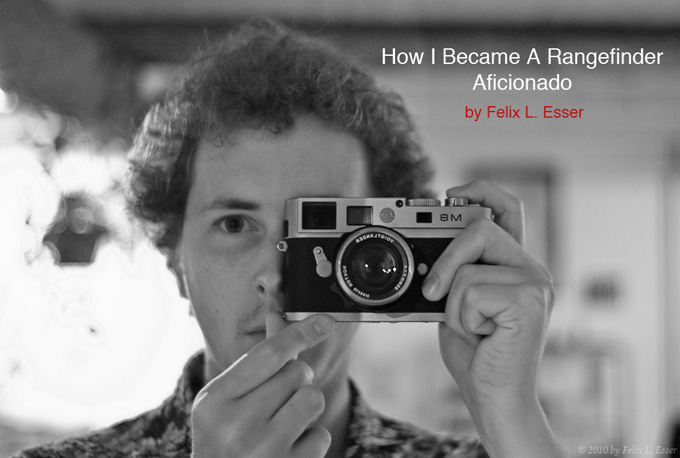
ABOVE: M8 + Nokton 35/1.4
First of all, I’d like to thank Steve Huff for giving me the opportunity to write a guest article for his website. I feel very honored, as there have already been many great articles by many great photographers here–besides the great work Steve is doing here. I’ve been a frequent visitor to Steve’s site for about a year, and he (and all of you who are contributing here) is partly responsible for my decision to try out rangefinder cameras in the first place. I am thus glad to be able to contribute to this site by writing this little essay, and hope that you enjoy reading it as much as I did writing it!
I first read the term ‘rangefinder’ in an article on the Epson R-D1s a couple years ago*. By that time, I was shooting my trusty Panasonic FZ30 superzoom bridge camera, and wasn’t as much into photography as I am now. (Had you asked me the difference between aperture value and exposure time by then, I couldn’t have told you–let alone explain what the terms even meant!) So you can imagine how I felt about this “exotic” device–I had no understanding for it at all. (In fact, my exact thoughts were something like “Who shoots such a thing! Looks awfully complicated!” :-))
I’d like to digress at this point and tell you a little about myself. I’m 27 years old at the time of writing this article, graduated from studying Comparative Indo-European Linguistics about a year ago, am married and have a son approximately 1 ½ years of age. As much as I love my profession as a linguist, my great passion is photography (although it only came to be that during the last year or so). I mainly take pictures of my family, but also of the world as I see and experience it, so I can remember where I have been and what I have done. I like to share my work with others, hoping to be able to inspire people by sharing what inspires me. I wouldn’t consider myself a technically good photographer at this point–I just love to take pictures, to tweak them to my liking, and to look at them and share them. But I am also interested in the work of others–contemporary photographers or masters of the old days–, to find new inspiration and enhance my photographic skills. Who knows, maybe one day I’ll be able to make some money from it!?
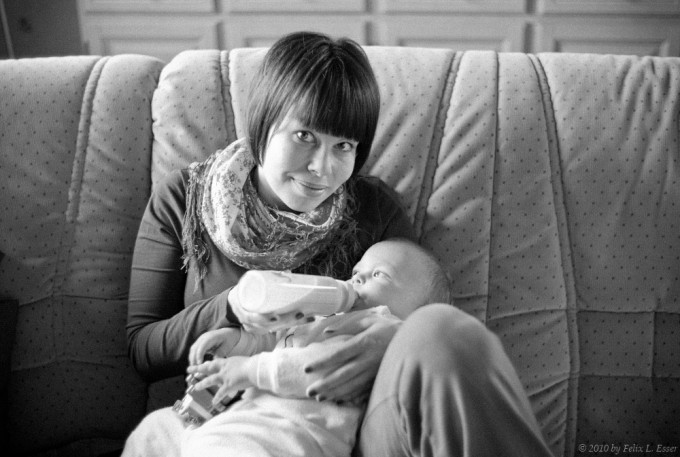 My wife and son – M8 + Nokton 35/1.4 @ f/1.4, ISO 640
My wife and son – M8 + Nokton 35/1.4 @ f/1.4, ISO 640
My son was born in February 2009. Before that, I had always enjoyed photography (to the extent where not much more than pointing, shooting and then looking at the result was involved), and being sort of a tech geek, I was also always very interested in the technology behind it (and thus pretty quickly gave up on film when digital established itself as the new standard). After my son was born, I quickly realized that I couldn’t capture many of those magic moments with my FZ30, as the combination of an f/2.8 lens with a maximum of 400 (quite noisy) ISO didn’t allow for much available light work. So I got the Olympus E-P1 (because it looked nice) and the Panasonic Lumix 20mm f/1.7 lens (because I finally understood what aperture values were all about) as soon as both were readily available–and from that point onwards my interest in photography made a huge leap forward. The new possibilities were vast and overwhelming, the images looked so much nicer and I felt so much less restricted suddenly. It was like a revelation, as if a hidden door had suddenly been unlocked.
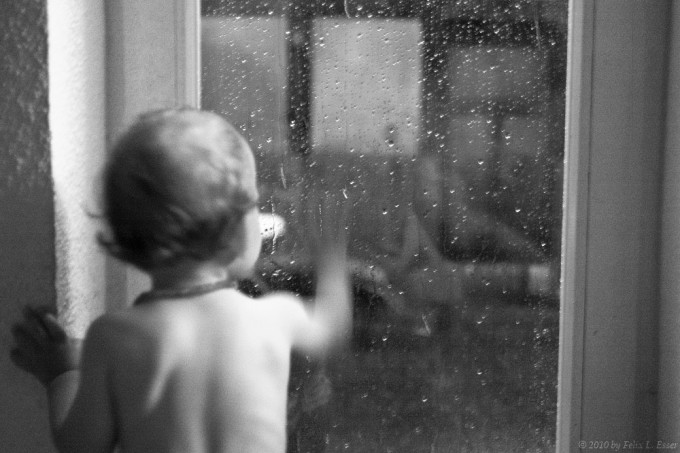 ABOVE: Watching the rain fall – M8 + Biogon 2/35 @ f/2, ISO 2500
ABOVE: Watching the rain fall – M8 + Biogon 2/35 @ f/2, ISO 2500
Sometime late last year, I accidentally and completely unintentionally stumbled across this website. I don’t’ remember what exactly I was looking for (possibly a review of the E-P1), but reading Steve’s articles and seeing the work of him and other Leica shooters, I became so fascinated by rangefinder cameras (and Leicas in particular), that the craving to experience rangefinder photography myself became stronger and stronger–up to the point where I couldn’t resist anymore. So I got myself an old film rangefinder (a 1969 Yashica Electro 35 GT), just to see if I’d like it … and experienced a similar kind of revelation as I first had with the E-P1. A whole new world of possibilities opened up in front of me–again. I felt like having so much more control suddenly, and the relation between me and my subject becoming so much more direct and intimate. You can probably imagine that it didn’t take much time until I lusted for a real Leica …
Let me digress once again. I do have considered (D)SLRs, multiple times in fact. The last time was before I decided to get the E-P1. But I wanted something smaller, more portable, less obtrusive. I have shot a film SLR several years ago–a Pentax ME Super, coupled with its standard 50mm f/1.7 lens, which was, in retrospective a very nice combo I probably shouldn’t have parted with–, but at that time my interest in manual operation wasn’t really existent. Today, when I look through a DSLR viewfinder, I can’t imagine getting friends with it. Not after having experienced the Leica M rangefinder, anyways.
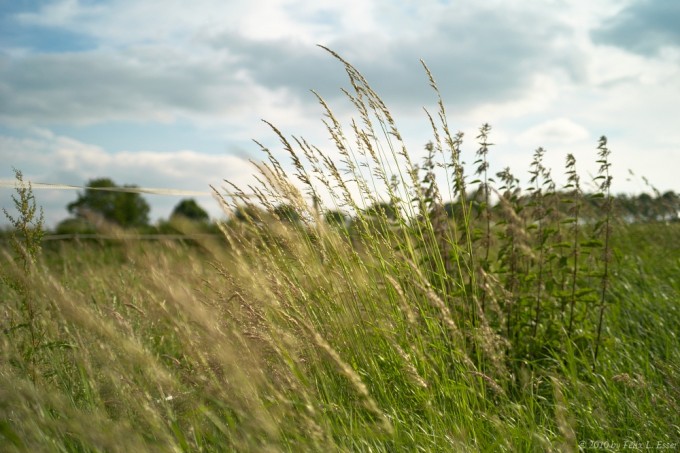 ABOVE: Weed in the wind – M8 + Biogon 2/35 @ f/2, ISO 160
ABOVE: Weed in the wind – M8 + Biogon 2/35 @ f/2, ISO 160
Now, being the kinda tech-geek that I am, I knew that if I were to get a Leica, it had to be a digital M. I also knew it wouldn’t be the M9–not in my professional and personal position. So I went for a quest on a used M8, and found a lovely second-hand chrome version for an acceptable price. When I first held it in my hands, I knew I was finally at home. That solid, all-metal body, the large and bright viewfinder, the sheer sensation of holding something in your hands that has been carefully and meticulously assembled by just a few talented craftsmen in a small factory somewhere in the rural areas of Western Germany (and, coincidentally, not at all that far from where I live)–it just felt so right, so basic, so natural. Holding a rangefinder camera–and a Leica M in particular–in your hands and up to your eyes is just a really, really special experience. It might not be everyone’s cup of tea, but it sure is mine.
Today, I am shooting my M8 whenever I find the time. Despite being smaller than most DSLRs, it is still considerably more bulky than my E-P1, so I can’t carry it with me everywhere–that’s what I’ve got the Olympus for. But I do take it with me on many an occasion, and especially when I know I want the best image quality. Yes, the M8 is four years old now, and in the digital world this means it’s already a classic. But even though it might be technologically „outdated“, it does still deliver much richer files than most of what you can get in the consumer segment today. The latitude for processing that the M8’s files offer is just astonishing–over- or underexpose your images by one stop, and the DNGs still have more than enough reserve to spoil you with a great-looking picture. And thanks to the non-existent anti-aliasing filter in front of the M8’s 10 megapixel Kodak CCD, the amount of detail being captured is just stunning! Even at 100% magnification, a crop from an M8 file can easily be used for web presentation. Try to do that with your leading-brand consumer DSLR–not even to mention your holiday snapshot superzoom compact.
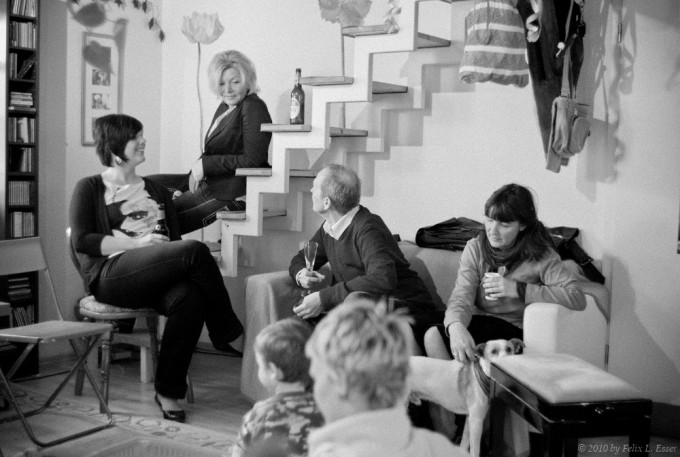 Party scene – M8 + Nokton 35/1.4 @ f/1.4, ISO 640
Party scene – M8 + Nokton 35/1.4 @ f/1.4, ISO 640
I know, photography isn’t just about the gear, it’s also (or even primarily) about the skill of the photographer. I’ve seen many great pictures taken with cameras that come at a much lower price than the M8 (the Holga, for example, or even cellphone cameras). But for me, taking a picture isn’t just about applying the rule of thirds, or correctly framing the „decisive moment“ from the right angle–it’s also a great deal about the experience of taking the picture, as this is what helps me forget the hassles of everyday life and work. In this manner, shooting the M8 is also a bit therapeutical for me–it helps me focus my mind, calm down my thoughts and just enjoy what I am doing. Besides rewarding me with so many invaluable memories that don’t get lost in the maze of my subconscious mind …
* Technically, it wasn’t the term ‘rangefinder’ but its German equivalent ‘Messsucher’.
You can see more of Felix at his blog HERE! Lot’s of cool photography info 🙂
[ad#Adsense Blog Sq Embed Image]

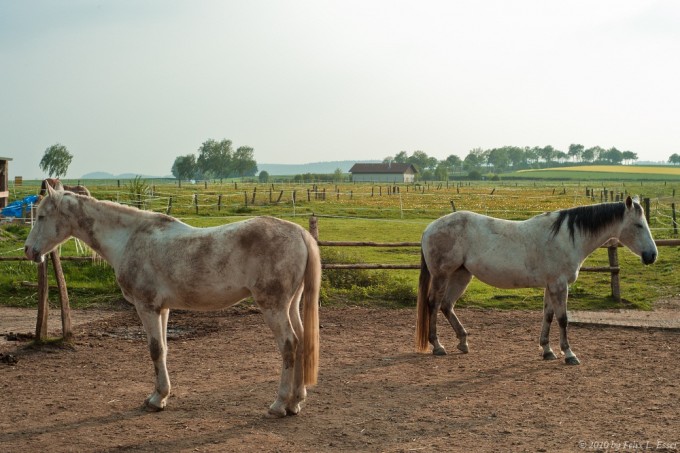
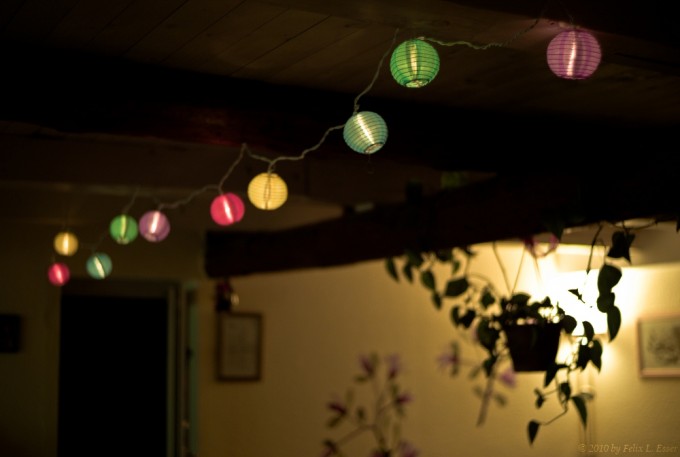
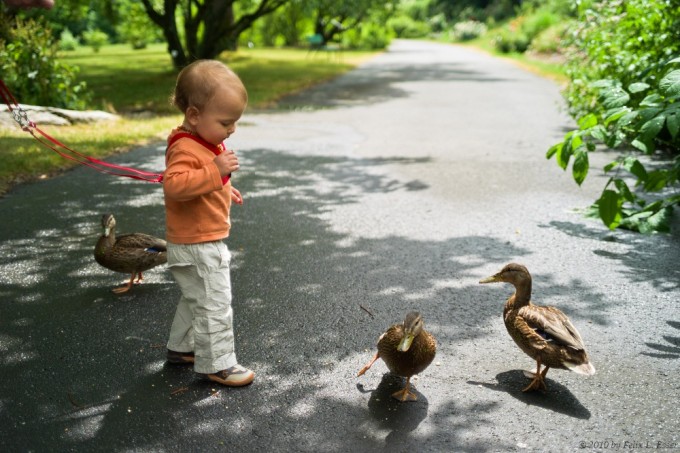
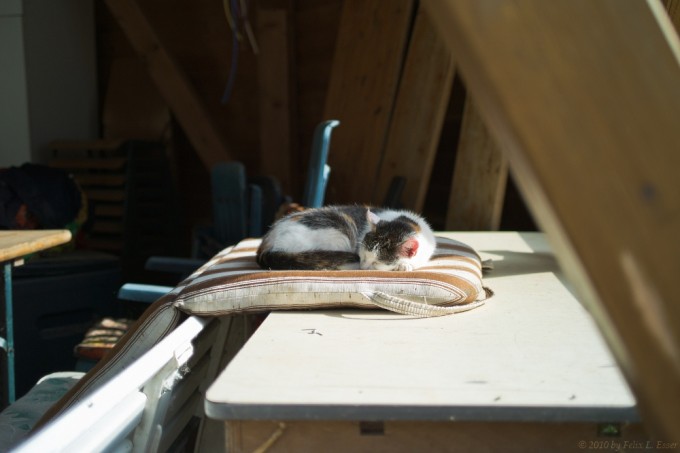



Great read and thanks for writing this. You remind me of myself. I went from Point and shoots to an EP2. Now I’m in the research mode and will probably get a used M8 too. I think my first purchase will be a 35mm lux or cron and try it on the EP2.
The horses look much sharper than my 20mm f1.7 or 7-14. The ducks and cat look very sharp to me too. So I’m sure with the premium leica lenses it would be even better.
I loves this entry!! I found Steve’s website a couple of days ago while looking for camera reviews (I’ve been contemplating getting my first DSLR after years of using canon and Lumix prosumer models) but now my heart skips a beat as I read your story and others, and I am lusting for a rangefinger! I will prob have to save for a long, long time.. But I think it will be worth it. Loved your story and you take great photos.. Doesn’t look like a hobbyist of 1.5 years! 🙂 thanks.
Thanks for your kind words, Farah! In fact, I’ve been taking photos for longer than 1.5 years, but really my serious interest in photography only developed during that time.
If you’d like to see if a rangefinder could be your thing, my tip is to get a cheap used fixed-lens film rangefinder such as the Yashica Electro 35 or Canon Canonet first, to see if you like the way of shooting. I digital rf is an investment, but if it’s your thing, then it’ll be worth it! (As I am sure many here will also tell you :-))
Hi Elaine,
I don’t have a phitography website but if you want to see more of my pictures go to Flickr and search for “BartmanSA”.
Agree that digital is a curse and a blessing. A curse because the average quality of photograph has dropped significantly since it’s introduction to mainstream and as you rightly point out, there are so many amateurs shooting below average wedding pictures etc the real pros are struggling. That said, it is wonderful that such a creative hobby is now available to everyone and it provides so much joy especially to those with children who want to catch those little moments which would have been impossible for most in the days of film only.
Wohhh what a comments storm around this post.
Felix, first of all thank you for your post. I think that of this site lives more from guest articles it would keep things more alive. At least, speaking from my point of view as a frequent reader, I was easily loosing the point of revisiting it every couple of days or so. Not that I am not keen of Steve’s opinion, just kind of bored of the same talk over and over. Anyway, this comment was for you, and basically what I would like you to ask is to ignore most of the comments and keep shoring your family. If you like it do it 😉 …but please, don’t tell In any future post that leica machines are made in a small village in the rural Gemany. Believe me, you don’t know what you’re talking about… Leica m machines are all made in Portugal, in a leica factory in Famalicão. In fact the first M5 were labeled made In Portugal. But as the sales dropped almost 50% due to that, they soon changed it to made in Geman still nowadays.
Anyway, thanks for your post and tanks Steve fr your site :p
Tiagoli, your flickriver stream (if that’s you) reveals some stunning images!
Tiagoli, thanks for your kind words, and for your info on where the M’s are actually being produced. I must admit that I had know of this before, but I seem to have repressed knowing it … 😉 The final assembly is still done in Solms though, right? Or do they just service the cameras there?
It is time consuming that is for sure and because of this one takes extra care before releasing that shutter. This extra care translates into “how do I take this picture so that when I have gone through the somewhat tedious process of developing and scanning, the image is worth it?”. With this care and thought going into each and every shot, the composition, choice of light, moment etc get better and better. Sure, it takes longer but I am convinced that because of this there is an increase in the desire to make every shot count and that is when we learn the most. Speaking just for myself, since I changed from shooting exclusively digital to now about 80% film and 20% digital, I am taking much fewer pictures but feel that the ones I do take are more likely to be keepers.
Pas op Stephen, direct heb je me overtuigd!
I did take a few shots with the FM2 and 2.0/35mm in the damp weather over lunch; had me getting accustomed to shooting fully manual again. 50% keepers at best, and only halfway through a roll of Tri-X 🙁 …
Good fun though, and had me looking at Zeiss Ikon rf’s and 2nd hand M6’s on the net… 🙂 . No doubt you can offer some good advice here.
P.s. Entschuldigungen to Felix for hijacking his thread…
Technically, you’re hijacking Steve’s website … 🙂 No problem!
Stephen, So you have a website? I would love to see your work. (If I’ve asked this before, sorry. I’m just pre-occupied with so much, I forget!)
Film is an old friend of mine too. I started with film. I embrace digital though. I shoot film rarely. It’s more of finding a good lab to develop it. Sometimes i wish digital was never around. It’s kind of a bless & a curse when I think of how the photography industry has changed due to digital. Many photographers are struggling to make ends meet. There’s an over saturation of digital amateurs pretending to be pros charging low fees and driving the industry in the ground. Then on the other hand, digital has woken up many people who were stagnant or not even in photography. So, although I love digital, I am saddened at what it’s done to the professional industry in regards to making a living.
Anyway, each medium has its pluses and minuses.
You’re on Facebook Elaine? Need I say more…
Sorry Felix,
in the pictures posted I can t see any justification to shoot rangefinder. Some pics do not seem sharp to me: okay, that is a technical argument – as long as the content is interesting enough there is no hazzle about sharpness etc. But there we are. Most of the pics look a little like the moment has been lost and the picture has been shot just a second to late. That is my feeling about it due to the strange framing of your motives. The elements in it do not interact with each other for me. The view is not drawn. I think technichally you could have done this with most cameras. If of course you feel the rangefinder is the better tool because it gives you the satisfaction while using it I would agree. But as it is for me, the pics here would no justify the M8 nor the lense for me. Sorry, no insult, just an impression.
As I stated, I don’t consider myself a technically good photographer. I take pictures because I have fun doing it, and it helps me remember what I’ve done and seen. Also, I don’t think one has to be a master of photographic theory to justify using a rangefinder camera.
Btw, technically, pretty much any picture could be taken with any camera, if it’s just the framing and composition that matters. So I’m sorry to say your argument doesn’t quite hold up 🙂
Shooting film (whatever camera) slows everything down, especially the number of shutter actuations. Why? Because it is relatively hard work to get to the point where you can view your image on the screen.
Michiel, be careful when shooting that tri-x as you need to shoot a completely different way to digital. There is a tendancy to shoot 50 or 60 digital shots and pick the top say 10. You can’t do that with film. You have to shoot slower and more deliberately. Ratio wise though you will get a lot more keepers. Takes a couple of rolls though as intially the tendancy is to shoot digital style for the first roll. Get frustrated with the results, slow down a bit with the second roll, still be frustrated and then get it better by the third roll. Make sure you shoot enough rolls so that you get the benefit. Also, not 3 in a row. Shoot, develop, scan. Shoot, develope, scan etc.
Thanks Stephen, I know; I’ve done it before. The fact alone that you have to advance the film and “cock” the shutter makes you slow down. Motorized “advance” as on a digital camera has its advantages as well though, in certain situations.
On a slightly related subject: when I tried out the M8 with 28mm Elmarit in the shop the other day, I found the shutter and apparently necessary associated movements within the body quite noisy and slightly disconcerting; almost as if film was being transported (not very likely that, ha ha!). Must’ve been the laborious to and fro going of the shutter curtain then. Cloth curtain instead of some advanced material like titanium leaves?nymore
Back on “subject”: I don’t do film processing myself a, although I could probably bring myself to revive my decades old film developing skills; bring out the old Patterson tank, the D76, the stop bath, the washing line to hang up the developed film… and then scan it…
Sounds extremely time consuming to me.
Michiel, of you want to dabble if rangefinder photography, rather than be concerned about the expense of a leica or the comparison to an SLR (digital or film) I suggest the following.
First, accept that the RF experience is different and you will need to get to know it by using it. So don’t take an SLR along. Just use the RF and don’t rush at first. As it can be different way of thinking.
Second, for a camera get a Kodak Retina IIIC or a Yashica RF. These can be found for under $200-$300. So you can use the price savings to pay for film and processing. I have used both and the cameras and lenses are excellent. Just buy from a dealer that will give you an honest assessment of it’s condition. Also, you may need to use a hand held meter, as the internal meters use a christal sensor vs electronic; which means it may not be that accurate.
Thanks for your suggestion Paul, but I’m trying to stay out of the spending loop and stay in the image capturing loop. With what I have, not with what I don’t have. It’s a psychologocal thing 🙂
In deference (is that the right word? Is it a word at all? 🙂 ) to your suggestion I took out my old FM2 with the 2.0/35mm Ai-s Nikkor (dubbed “garbage” by some poster here recently) loaded with Tri-X this morning, and do some shooting over lunch. It’s darkish ans it’s raining; suits the FM2 and the Tri-X…
Michiel, I wish I had that “garbage” camera/The NIkon FM2 is a lovely camera! I’ve always wanted one!
I know! Thanks Elaine; I don’t think I’ll ever get rid of it.
Michiel
Your Nikkor lens is much better than the credit it was given, and it is better than the original AF version. Just try to keep your shutter speeds fairly fast (1/30 at the longest). The reason for this is, in my experience with Nikon’s earlier vertical travel shutters (in the FM2, FA, F4, & F5), the mirror and shutter bounce can be significant when the shutter is opened and image quality suffers. If you get the chance to try your lens on an F, F2, or F3 body do it. These, and your lens, are the reason Leica came out with the R-System of bodies and lenses.
Thanks Paul! I sold my old F body a few months ago. I only used it a couple of times in the twenty years or so I had it. It stood, for decorative purposes, on a tripod in the living room. I love my FM2 and like using it with the 35mm and occasionally the 24mm. The quality is ok (not more than that) with B&W film. You have a good point about the shutter going off; it is rather a basic but wellmade camera.
I have tried to include a link; FM2, 2.8/24 @ f2.8, 1/8 sec, Delta 3200.[img]http://www.facebook.com/#!/photo.php?pid=1459640&o=all&op=1&view=all&subj=52342058336&id=1019802137[/img]
Adam, your comment about being considered different for doing large format is the truth. I have three LF cameras and my family and friends think I am strange too. Though the results are worth it. 🙂
Felix, I like your zeal for the rangefinder camera. It seems like you found your true love, and it’s nice to read that. I like the photos and the enthusiasm.Happy shooting. 🙂
Thanks! With the M8 it was love on first sight – although not on first use! (Had quite a time getting used to it … but now I wouldn’t ever part with it again!)
Hi,
An M8 is definitely a nice thing to hold in hands. I am still struggling whether I should keep my Epson R1D, since focusing with it is not easy. I understand it is much easier with the Leica VF, which brings me to the point: to my eyes all your pictures (except for the one with the horses) are not really sharp: they either don’t seem to be focused or there is some other blur / camera shake. Is this intended?
Moritz, have you clicked the images and opened the original (1000px) versions? In the article, they’re slightly downsized. This might be why they look so soft to you. Oh, and the one of my son looking through the rainy door is intentionally out-of-focus (focused on the raindrops) and unintentionally a bit blurry 🙂
In fact, unlike quite a lot of pictures posted here which appear intentionally or unintentionally unsharp all over (due to either very large apertures or slow shutter speeds), Felix’ pictures (except I think the one of his wife) have excellent sharpness exactly where he wanted it. Some might have chosen a larger aperture in some cases for less dof, but they look very good to me.
Really enjoyed reading your article and I found it very interesting, thanks for taking the time to write it
Thanks for reading, and I’m glad you liked it!
Lovely article which captures the excitement of entry into the rangefinder “way”. Thanks for your words and images, Felix! Keep up the great work…
Thank you, Ashwin!
I like the ducks… very chatty…
Yes, they’re one of my favourites, too! 🙂
Thanks for the article Felix. I enjoyed reading it and I apriciate you being so active in the rf forum community. You really sum up the fun in rangefinder photography.
Thanks for your kind words, Per!
Felix, thanks for the article. Your enthusiasm is nice to see and happy to hear the M8 is satisfying your needs.
To Michiel, RF vs AF. I shoot a 5D professionally and an M9. The 5D works, but I do not love it. In the studio its fine, but on the streets, when most focus is anticipated, there is no to fret over fast AF.
I rarely come across a situation where a shot is missed because of a lack of auto focus. Most shots you can see coming from a mile away.
Pros of a RF:
1. When you focus with a RF, your field of view does not go in and out of focus. The SLR way of focusing is terrible. Why on earth would I want my entire field of view to go in and out of focus? In a rangefinder it never moves. My hasselblad behaves the same way as an SLR, but usually its on a tripod and I am waiting for long periods of time for weather events to line up in my favor. I literally have all the time in the world.
2. There is no click in your view as the shutter fires. Trying to catch any decisive moment, with a flicker of black, as the shutter fires is a huge distraction.
3. Unless you are shooting the 28mm on an M9 your actual capture image is smaller than your field of view so you can see more of the scene.
4. No one takes RF cameras seriously. Trying convincing a guard holding a machine gun that your D3 is just a hobby camera, good luck.
5. The single most important plus of a rangefinder is that I can keep my left eye open and look at my subject. To me, this just feels good.
All in all its a personal preference. If better pictures come from a DSLR or an 8×10 go with what works for you. Thats why we have lots of formats to choose from. If you have been trying since 1970 to understand a RF and it hasn’t clicked, its probably worth looking into something else. Time is better spent taking pictures than trying to understand why people make certain choices. But if you must, rent a camera and take it outside of the dealers shop.
I come from a family of photographers and am the only one who shoot RF. They shoot Canon 5D’s and Nikon D700’s professionally. They think my interest in large format is insanity. We are all different.
Thanks for that Adam! Interesting comments to be sure. Anyways.
1 I haven’t encountered a guy with a machinegun recently while pointing a camera, but do believe that eye contact and communication will resolve or not resolve any image capturing situation, regardless of the type of camera you’re carrying. Unless you’re prepared to initiate a minor war.
2 At large apertures a good autofocus system, sensibly used, will beat any form of manual focusing in non-static situations. Try it.
3 Maybe I should try rf focusing for a little bit longer. Only thing, I can’t afford the additional outlay for an M8 with even only one lens. Unless I would give up the D700 with 35, 50 and 85 Zeiss glass. Which would be stupid.
Thanks, Adam!
Adam, great answer. I also believe that each camera has its own special quality too. My favorite camera was my Canon AE-1 when I was growing up.
Steve, thanks for publishing my article so quickly, it’s been a great honour for me! 🙂
Exellent pics. Did you use the UV/IR filter on your lens?
Thank you very much! I didn’t use a filter for all pictures, as I didn’t have one when I had the VC Nokton 35/1.4. The shot of the two juxtaposed horses, for example, was taken without a filter, and I adjusted the colors in post-processing.
Hallo Felix! Congrats on your choice!
As much as I tried, I couldn’t find the “rangefinder” argument in your story, as opposed to “slr”, “autofocus”, “gazing at a display”, etc etc.
I completely understand the “beautiful machine” thing, but could you elaborate on the rf argument?
Also, by choosing a non-Leitz lens, haven’t you passed over the “Leica” magic? 🙂
Michiel, the “RF Argument” has been gone over many many times on this site and others. Do you shoot with an RF? I do not remember if you did or not.. Thx
Steve
Steve, that’s not the point of Felix’s entry, is it?
I for one am interested to learn how people experience the transition (if any) from other forms of focusing to rf focusing. I didn’t find that in Felix’s entry; notwithstanding the title.
I have tried (in a shop…) rf Leica’s, had an M5 for a few weeks, couldn’t adapt to it readily. AF with the E-P2, MF with the D700 and Zeiss glass, that’s it for me for now.
As I’ve explained in another post, I can’t really justify the extra outlay for a 2nd hand M8 + 35mm or 50mm eq against the E-P2.
And, accurately manually focusing the D700/35, 50 and 85 at large apertures turns out to be quite a challenge.
On a 2 week holiday in Ukraine I did appr 55% E-P2/20mm 1.7; 45% D700 35, 50, 85 Zeiss, doing one camera/lens combo each day.
I may post a few if you will let me.
Michiel, I believe the argument is there, even though it might not be so obvious as I didn’t directly speak of the technical aspect of rangefinder focusing. But if this answers your question: I find framing and focusing through the rangefinder much more enjoyable than through an SLR’s viewfinder, and even more so than via a display – or even a high-resolving EVF. It’s just so much closer to reality, and choosing the correct focus, aperture (and sometimes even exposure) settings manually instead of having an automated routine do it gives you a feeling of control, and is in effect quite often much more precise than what I get with my E-P1. I haven’t experienced pro-grade DSLRs so far, so I can’t say how precise their algorithms might get – but then again, I’m not interested 🙂
Thanks for your reply Felix!
So, here’s what I think.
1 I have always been an slr shooter, from appr 1970. That sort of shapes you.
2 I have always found focusing/framing through a display abhorrent. Hence my dislike of the X1 (and its toy like quality). I like focusing and framing through a viewfinder like the D700’s.
3 I have tried (as I stated) an M5 for a week or so. Couldn’t get used to it. Maybe I should have tried longer.
4 The EVF of the E-P2 gives you a slightly artificial view of the world and (not unimportantly) a lot of adjustable information ánd the AF symbol and signal.
5 I can’t for the life of me find the difference in IQ between the M8 and the E-P2 to be substantial. I may be visually impaired.
6 I once again tried out the M8 with an 28 Elmarit in a shop recently and again liked the feel immediately. But, RF?, no AF?, IQ difference?, price difference?
IMHO.
Michiel, I think it’s a slight difference at smaller sizes, but as you enlarge the photos, it becomes more apparent. But not sure of the ISO differences. That could all be a wash as the ISO goes up in each camera. There is a difference in quality, but is it worth the extra cash outlay for the M camera and the Leica lenses? It’s an individual and personal choice. I totally understand your view on the D-SLR and RF. I like the RF viewfinder but am frustrated by the focusing challenges due to my eyes. I find it easier to use AF. Using a M is quirky, but it’s a different style of taking a picture. Much slower. Much more thought. The same can be said for the D-SLR if you use all manual including the focus. The D-SLR quality in higher ISO will blow away the Leica. The fact that the Leica digital M camera doesn’t have higher ISO capabilities and AF are my most frustrating issues. Other than that, I adore the Leica system. I can only imagine what the Leica R system must have been like. Quite nice, I’m sure.
Again, it’s a matter of personal choices. i’m on the fence about Leica due to the few niggles I have with them. Top of the list is the price. If the prices weren’t so ridiculous, you could almost forget the little irritating things about the system, as you could with any system. What makes Canon and Nikon so attractive is that they do it right at a reasonable price. It’s a different beast though. It’s like going back in time and asking people if they prefer the Leica M6 over the Nikon F4 or Canon F1 camera system. It’s personal preference.
I hate EVF on cameras though. I don’t like it on the Leica D-Lux 4, but I compromise for the compactness of the camera. it’s always some sort of compromise, isn’t it?
Yes Elaine, the compromise is always there, sort of like life I guess. I also like your reasoning; mirrors mine although we’ve made different choices. The more mature view probably is to stick to a choice for a considerable length of time and get the most out of it, instead of hopping on to the next bandwagon every few months (I did that last year at considerable expense, until I grew up 🙂 ).
Keep shooting!
Michiel, I agree. I jumped onto the Leica bandwagon too, and although it’s been tough for me (and extremely expensive), others have taken to it easily. It’s not that i don’t like the Leica cameras, it’s just that I find them to be too expensive for what they are. I’m still trying to embrace the digital rangefinder. Like I said, when I can get a good file out of the camera, it’s very lovely. It does have the Leica glow. I’m just more used to the Nikon system. I do love Leica though. They have a certain mystique about them, and they feel wonderful in the hand. It’s a very slow process for me.
OMG it’s so expensive! I have the M9, but I still love my D3 with 24 F1.4. Just that carrying around that body and lens for a day of shooting vs M9 and 24 elmarit or 28 elmarit (even smaller), it get’s to be too much. Nobody pays attention to me when I’m with M9 too. With D3, people always look at me and annoy me with stupid questions, you guys know the kind….
How many Megapixels is that?
I bet the zoom on that lense is crazy good! (pointing to the 24 F1.4)
Can I hold it? (ummmm, no.)